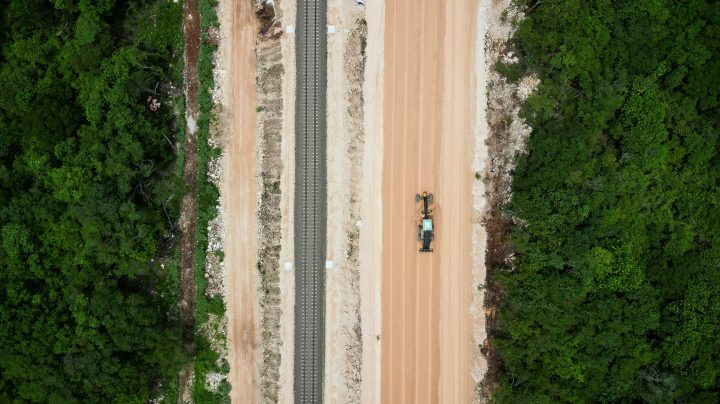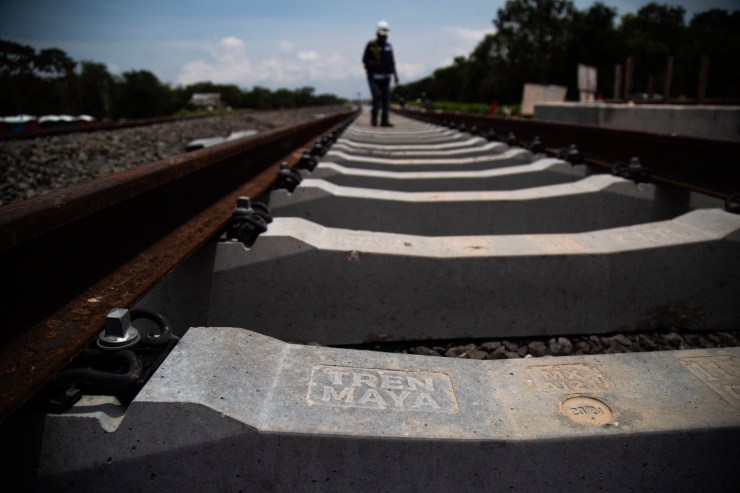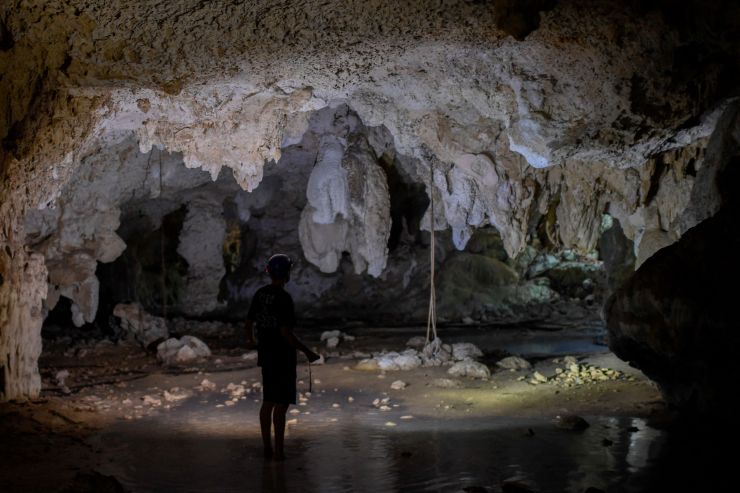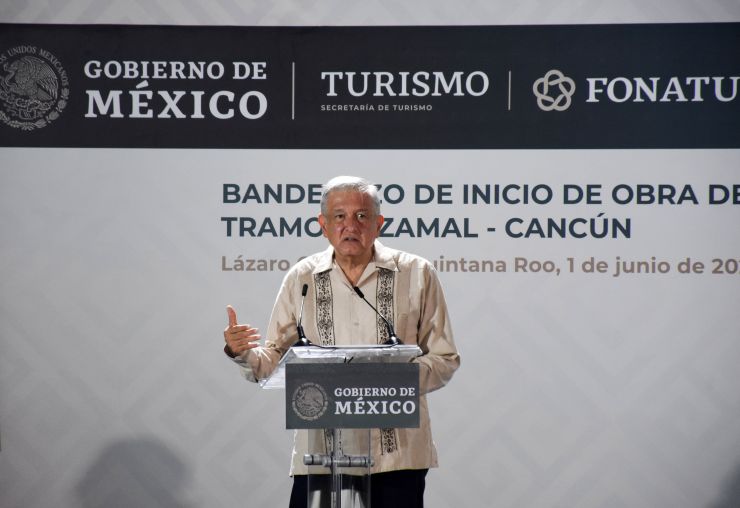
Mexico’s massive new Tren Maya rail network raises environmental concerns
Mexico’s massive new Tren Maya rail network raises environmental concerns

This story was produced by our colleagues at the BBC.

Mexico has a new multibillion-dollar rail network called the Tren Maya. It’s projected to bring more tourists to the impoverished Yucatan Peninsula, but environmentalists say it’s an environmental catastrophe. Construction has destroyed swaths of virgin rainforest, and there are concerns over freshwater caves.
To the ancient Mayans, the cenotes of the Yucatan Peninsula were sacred — portals to the gods of the underworld. They’re also some of the most unspoiled freshwater ecosystems in the Americas.
But the tranquility of the caves contrasts with the construction going on directly above them. The final columns and tracks are being laid for the Mexican president’s pet infrastructure project. Parts of the train line opened to passengers in December, but its costs have ballooned from its originally estimated $7.5 billion to more than $28 billion.
Stretching for more than 1,500 kilometers, supporters of the rail link say it will bring tourism and development to the jungle. Environmentalists, however, are horrified. The deforestation alone along the route has been catastrophic for the habitats of species like jaguars, scarlet macaws and spider monkeys.
Activists from a group called Sélvame del Tren (a play on “selva,” Spanish for jungle, and the phrase “sálvame del tren,” meaning “save me from the train”) point to another environmental cost: water pollution in the labyrinth of underground tunnels and caverns.
“All this water, there’s a small flow going all the way toward the ocean. So the more we pollute in the center of the peninsula, the more we pollute the ocean,” said Bernadette Carrión, a cave diver.

Any pollution here also harms the coral reefs out at sea, she said. Above ground, the Tren Maya has divided entire communities. The village of Vida y Esperanza has been bisected by a maintenance station.
Some were well paid for their land and are hopeful the train will bring prosperity. But Benjamin Chim had his fields dynamited and turned into a quarry. He never received compensation for them, as — like many Mayan farmers — he couldn’t prove ownership.

In a promotional video, President Andrés Manuel López Obrador (or AMLO) took the Tren Maya for a test drive ahead of his inauguration. His plan is popular, particularly among his base.
For AMLO, it’s part of a wider vision to re-galvanize Mexico’s once-great train services. It includes returning some 20,000 kilometers of track used exclusively for freight use to passengers and creating a coast-to-coast cargo line to rival the Panama Canal.
AMLO’s legacy infrastructure project may bring jobs to the Yucatan, but his critics worry it will also ruin the hidden treasures upon which the region was founded.
There’s a lot happening in the world. Through it all, Marketplace is here for you.
You rely on Marketplace to break down the world’s events and tell you how it affects you in a fact-based, approachable way. We rely on your financial support to keep making that possible.
Your donation today powers the independent journalism that you rely on. For just $5/month, you can help sustain Marketplace so we can keep reporting on the things that matter to you.

















